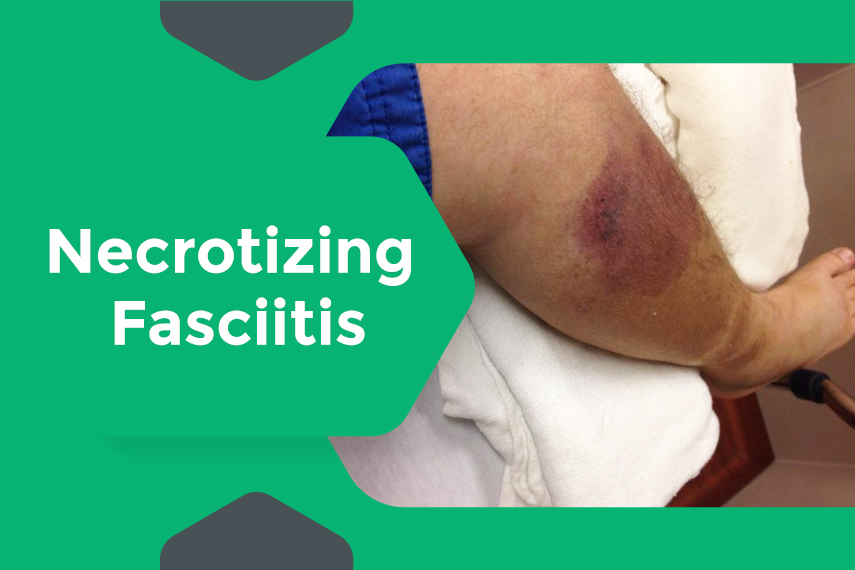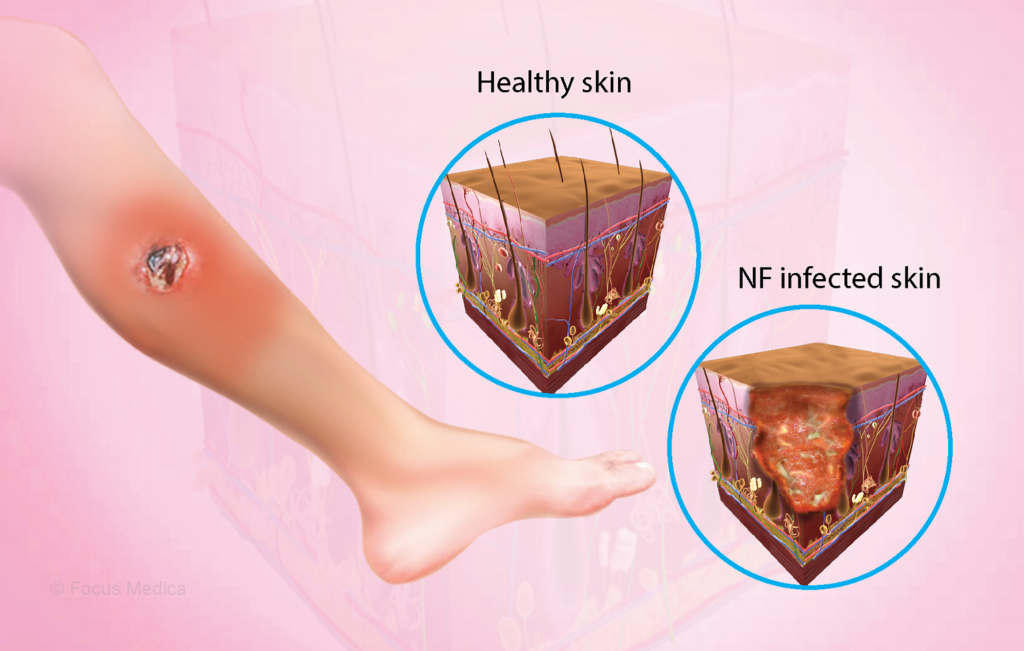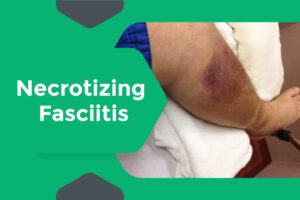What is the Most Common Cause of Necrotizing Fasciitis?

Necrotizing fasciitis, often referred to as the “flesh-eating disease,” is a rare but extremely serious bacterial infection that affects the deeper layers of the skin, including the fascia, which is the tissue that surrounds muscles, nerves, fat, and blood vessels. This condition can progress rapidly and is associated with high morbidity and mortality rates if not promptly treated.

What Causes Necrotizing Fasciitis?
The primary cause of necrotizing fasciitis is bacterial infection. Several types of bacteria can lead to this condition, but the most common ones include:
1. Group A Streptococcus (GAS)
Group A Streptococcus bacteria, particularly Streptococcus pyogenes, are the leading cause of necrotizing fasciitis. These bacteria are commonly found on the skin or in the throat and can enter the body through breaks in the skin, such as cuts, surgical wounds, or puncture wounds. GAS infections are notorious for their ability to spread quickly through tissue and release toxins that damage tissue and impair the immune system’s response.
2. Staphylococcus aureus
Staphylococcus aureus, including methicillin-resistant Staphylococcus aureus (MRSA), is another significant cause of necrotizing fasciitis. Like GAS, Staphylococcus aureus can enter the body through skin wounds or surgical sites. MRSA, in particular, is resistant to many antibiotics, complicating treatment and increasing the severity of the infection.
3. Other Bacteria
While less common, other bacteria can also cause necrotizing fasciitis. These include various gram-negative bacteria (such as Escherichia coli, Klebsiella, Pseudomonas) and anaerobic bacteria (like Clostridium species). These bacteria typically infect deeper tissues and can lead to rapid tissue destruction and systemic illness if not treated promptly.

How Does Necrotizing Fasciitis Develop?
Necrotizing fasciitis develops when bacteria enter the body and spread rapidly through the fascial planes. Factors that increase the risk of developing this condition include:
- Open Wounds: Any break in the skin, from minor cuts to surgical incisions, provides an entry point for bacteria.
- Weakened Immune System: Conditions such as diabetes, cancer, or immunosuppressive therapy can impair the body’s ability to fight infections.
- Chronic Health Conditions: Obesity, peripheral vascular disease, and chronic kidney disease can compromise blood flow and tissue oxygenation, making tissues more susceptible to infection.
- Malnutrition: Poor nutrition weakens the immune system, making individuals more vulnerable to infections.
Symptoms and Diagnosis
The symptoms of necrotizing fasciitis often start with pain or soreness that is disproportionate to the visible wound. As the infection progresses, symptoms may include swelling, redness, fever, and rapidly spreading tissue death (necrosis). Diagnosis typically involves clinical evaluation, imaging studies (such as CT or MRI), and sometimes surgical exploration to assess the extent of tissue damage.

Treatment and Prognosis
Early recognition and treatment are critical for improving outcomes in necrotizing fasciitis. Treatment usually involves a combination of surgical debridement (removal of dead and infected tissue), broad-spectrum antibiotics, and supportive care in a hospital setting. Despite aggressive treatment, necrotizing fasciitis can lead to serious complications such as limb loss, organ failure, or death, emphasizing the importance of rapid intervention.
Conclusion
Necrotizing fasciitis remains a rare but potentially devastating infection, primarily caused by aggressive bacterial pathogens like Group A Streptococcus and Staphylococcus aureus. Understanding its causes, risk factors, and symptoms is crucial for early detection and effective treatment. While advances in medical care have improved outcomes, vigilance and prompt medical attention remain paramount in managing this severe condition.




